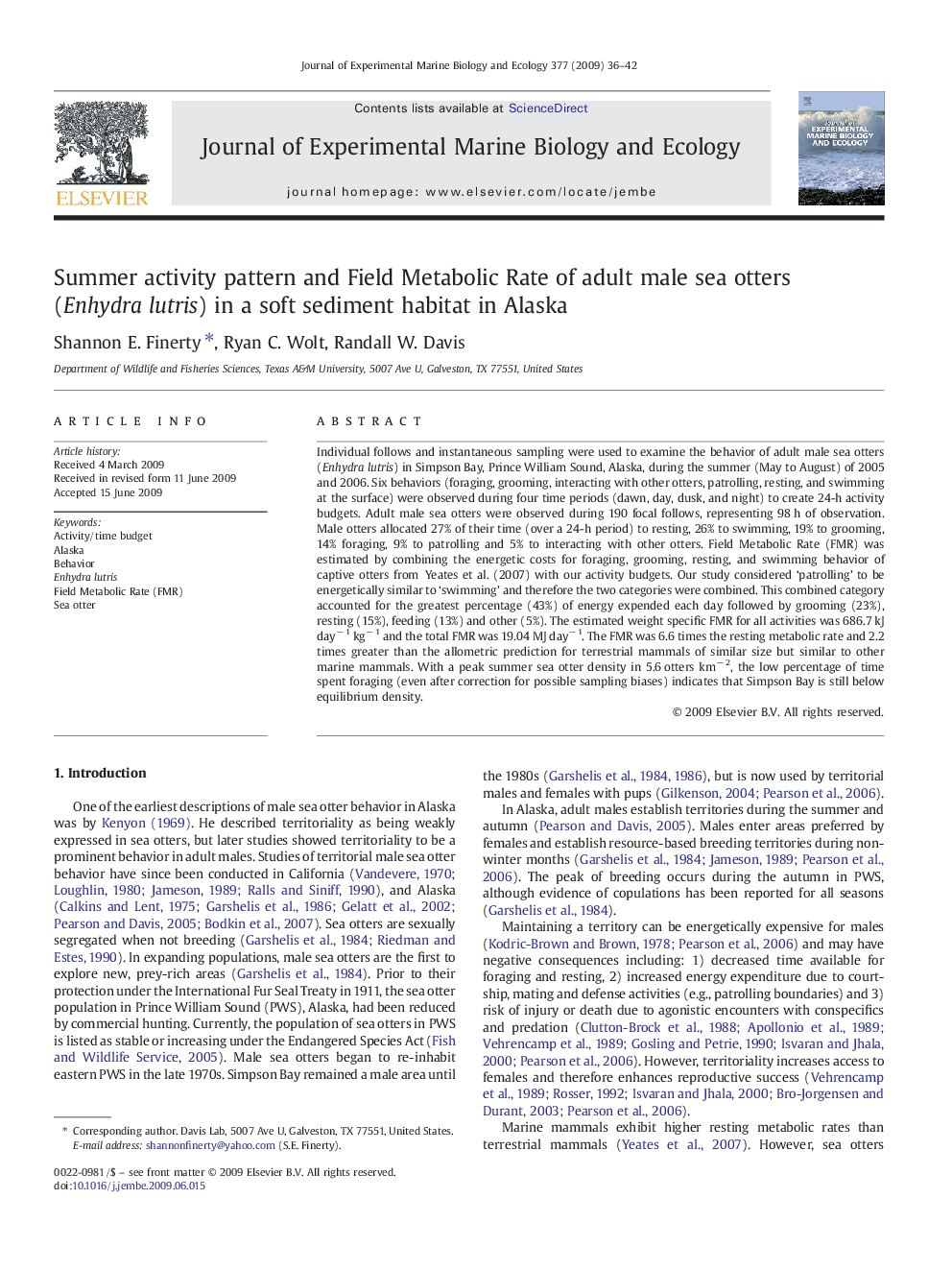| Article ID | Journal | Published Year | Pages | File Type |
|---|---|---|---|---|
| 4396914 | Journal of Experimental Marine Biology and Ecology | 2009 | 7 Pages |
Individual follows and instantaneous sampling were used to examine the behavior of adult male sea otters (Enhydra lutris) in Simpson Bay, Prince William Sound, Alaska, during the summer (May to August) of 2005 and 2006. Six behaviors (foraging, grooming, interacting with other otters, patrolling, resting, and swimming at the surface) were observed during four time periods (dawn, day, dusk, and night) to create 24-h activity budgets. Adult male sea otters were observed during 190 focal follows, representing 98 h of observation. Male otters allocated 27% of their time (over a 24-h period) to resting, 26% to swimming, 19% to grooming, 14% foraging, 9% to patrolling and 5% to interacting with other otters. Field Metabolic Rate (FMR) was estimated by combining the energetic costs for foraging, grooming, resting, and swimming behavior of captive otters from Yeates et al. (2007) with our activity budgets. Our study considered ‘patrolling’ to be energetically similar to ‘swimming’ and therefore the two categories were combined. This combined category accounted for the greatest percentage (43%) of energy expended each day followed by grooming (23%), resting (15%), feeding (13%) and other (5%). The estimated weight specific FMR for all activities was 686.7 kJ day− 1 kg− 1 and the total FMR was 19.04 MJ day− 1. The FMR was 6.6 times the resting metabolic rate and 2.2 times greater than the allometric prediction for terrestrial mammals of similar size but similar to other marine mammals. With a peak summer sea otter density in 5.6 otters km− 2, the low percentage of time spent foraging (even after correction for possible sampling biases) indicates that Simpson Bay is still below equilibrium density.
